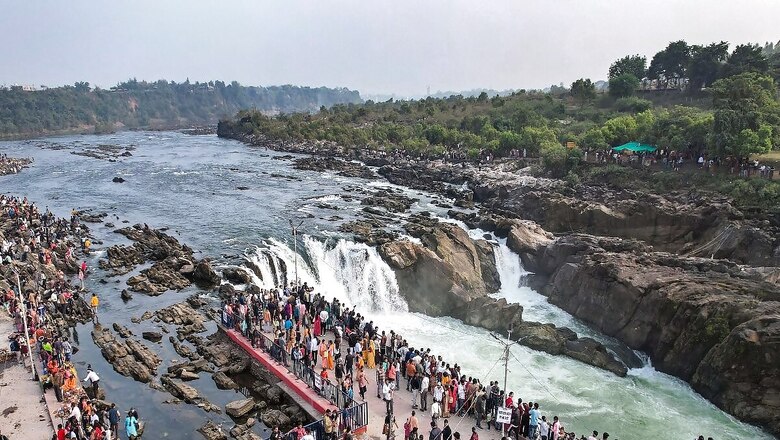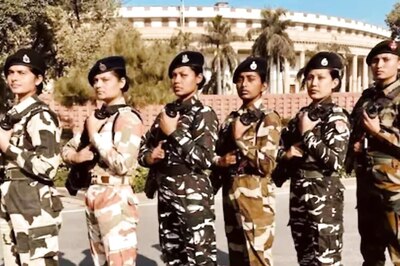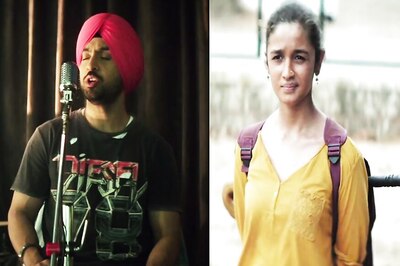
views
India is a land of rivers. Rivers have been the lifeline for millions of Indians through millennia. The country itself derives its modern name – India – from the river Indus. While some rivers are worshipped as deities, others sustain lives around them. In either case, Indians have a profound sense of reverence for their rivers. However, the health of many such rivers has taken a severe beating in recent decades owing to unchecked industrial activities and a lack of proper waste management systems.
Rapid urbanisation has led to rivers becoming dumping grounds for waste and sewage. For long, no earnest efforts were made to conserve and rejuvenate Indian rivers. Fortunately for these rivers, India is now led by a prime minister who understands the assignment well and has made an aggressive push to clean these lifelines since 2014.
The Centre recently announced that studies will be conducted for cleaning six major river basins in the country. 12 major institutes will take up the effort, based on which proper management plans will be formulated. To that end, the government has facilitated the signing of agreements between the National River Conservation Directorate under the Ministry of Jal Shakti and institutes which comprise of the IITs, NITs, IISc and NEERI Nagpur.
As a result, proper river basin management plans will now be formulated for the Narmada, Godavari, Krishna, Cauvery, Periyar, and Mahanadi rivers by these institutes. Based on these studies and adding on the learning of the Namami Gange project, the government will then have a standard benchmark for upcoming river rejuvenation and conservation projects. This signals a broad government push in the offing to clean up major rivers, especially in Deccan and Southern India.
Take the example of the Narmada alone. In 2016, water samples from four different points of the river were tested by the Madhya Pradesh Pollution Control Board (MPPCB) and the river water was rendered unfit for usage. Increased urbanisation and industrialisation across the river deteriorated its water quality to category ‘C’ as per the Bureau of Indian Standards. As of 2017, untreated waste and sewage from 52 cities in Madhya Pradesh was adversely impacting the river.
In 2016, the Madhya Pradesh government announced a project valued at Rs 1,500 crore aimed at the construction of sewage treatment plants, the restructuring of sewage lines, and the prevention of waste discharge from human settlements into the river. In December of the same year, Prime Minister Narendra Modi launched the Narmada Seva Mission. This initiative involved then Madhya Pradesh Chief Minister Shivraj Singh Chouhan leading a yatra along the Narmada basin, where he addressed numerous public gatherings, urging people to refrain from polluting the river. The Seva Yatra also witnessed a record-breaking plantation of 7.14 crore saplings along the riverbanks, emphasising the importance of widespread participation in conservation efforts.
The case with the Godavari is not very different either. In 2019, the river’s water quality fell to the ‘C’ category, like the Narmada. Subsequently, in 2022, the Modi government sanctioned over Rs 88 crore under the National River Conservation Plan (NCRP) to clean the Godavari. The funds were provided to construct sewage treatment plants (STP), underground drainage systems and diversion facilities to ensure untreated water does not enter the river.
Up north, Project Devika has been completed. Dubbed North India’s first river rejuvenation initiative, the project was launched by PM Modi in February 2019 with the aim of protecting the purity and health of the river Devika. Devika, revered as the sibling of the sacred Ganga, bears immense religious importance. Rising from the hilly terrain near the Suddha Mahadev temple in Jammu and Kashmir’s Udhampur district, Devika meanders westward towards Punjab, eventually merging with the Ravi River, now located in Pakistan.
Under Project Devika, three sewage treatment plants with capacities of 8 MLD, 4 MLD, and 1.6 MLD respectively have been established. Furthermore, a sewerage network spanning 129.27 km will efficiently manage household waste disposal. The project also entailed the construction of two cremation ghats, installation of protective fencing and landscaping, development of small hydropower plants, and establishment of three solar power plants along the river.
How India is Taking its River Rejuvenation Model Around the World
The effort to rejuvenate and conserve the great Indian rivers is a gargantuan effort that has much to offer to the world. It is no secret that India has begun asserting greater influence within the international community, with a host of countries looking towards it for innovative solutions to complex problems. At the COP28 Summit in Dubai last year, India launched the Global River Cities Alliance (GRCA) along with a host of countries. The initiative is led by the National Mission for Clean Ganga (NMCG), and countries like Egypt, Netherlands, Denmark, Ghana, Australia, Bhutan, Cambodia and Japan are a part of it.
Besides, renowned river cities of the world, like The Hague from the Netherlands, Adelaide from Australia, and Szolnok of Hungary are also a part of the international initiative. As a result, GRCA has metamorphosed into a unique alliance covering 275+ global river cities in 11 countries. International funding agencies like the World Bank, Asian Development Bank and Asian Infrastructure Investment Bank as well as knowledge management partners have also joined the India-led initiative.
That the initiative is led by the National Mission for Clean Ganga – the body overseeing the Namami Gange project – is noteworthy and speaks to the impact India’s effort to clean its most revered river has had on the international community. It is owing to this recognition of India’s efforts to clean the Ganga that the project has been adjudged as one of the top 10 World Restoration Flagships initiatives.
The Centre has taken several measures under the National River Conservation Plan (NRCP) and Namami Gange project to clean and rejuvenate India’s rivers. For the period between FY 2021-26, the Modi government has allocated Rs 2652.00 crore and Rs 22,500 crore for the National River Conservation Directorate and National Mission for Clean Ganga respectively.
The Namami Gange mission is one of the top priorities of the Centre. Launched in 2014, the mission has been allocated a total sum of Rs 16,011.65 crore from FY 2014-15, up until October 2023.
Under the Namami Gange Programme, a comprehensive set of interventions such as wastewater treatment, solid waste management, riverfront management (ghats and crematoria development), e-flow, afforestation, biodiversity conservation and public participation have been taken up for the rejuvenation of the Ganga and its tributaries. So far, a total of 450 projects have been taken up at an estimated cost of Rs. 38,438 crore, out of which 280 projects have been completed and made operational. The majority of the projects pertain to the creation of sewage infrastructure as untreated domestic and industrial wastewater is the main reason for pollution in the river.
In addition, a dashboard called PRAYAG was launched in April 2023 to constantly monitor river water quality, and performance of Sewage Treatment Plants (STPs) and Common Effluent Treatment Plant (CETPs) on the Ganga and Yamuna rivers.
India’s efforts to revive its most important rivers mark a significant stride towards environmental preservation and global collaboration. With initiatives like the Narmada Seva Mission, Project Devika, and the Namami Gange project, India is not only reclaiming its own sacred waterways but also setting an example for the world. The establishment of the Global River Cities Alliance further cements India’s role as a leader in river conservation, with countries worldwide looking to emulate its success.
Views expressed in the above piece are personal and solely that of the author. They do not necessarily reflect News18’s views.




















Comments
0 comment